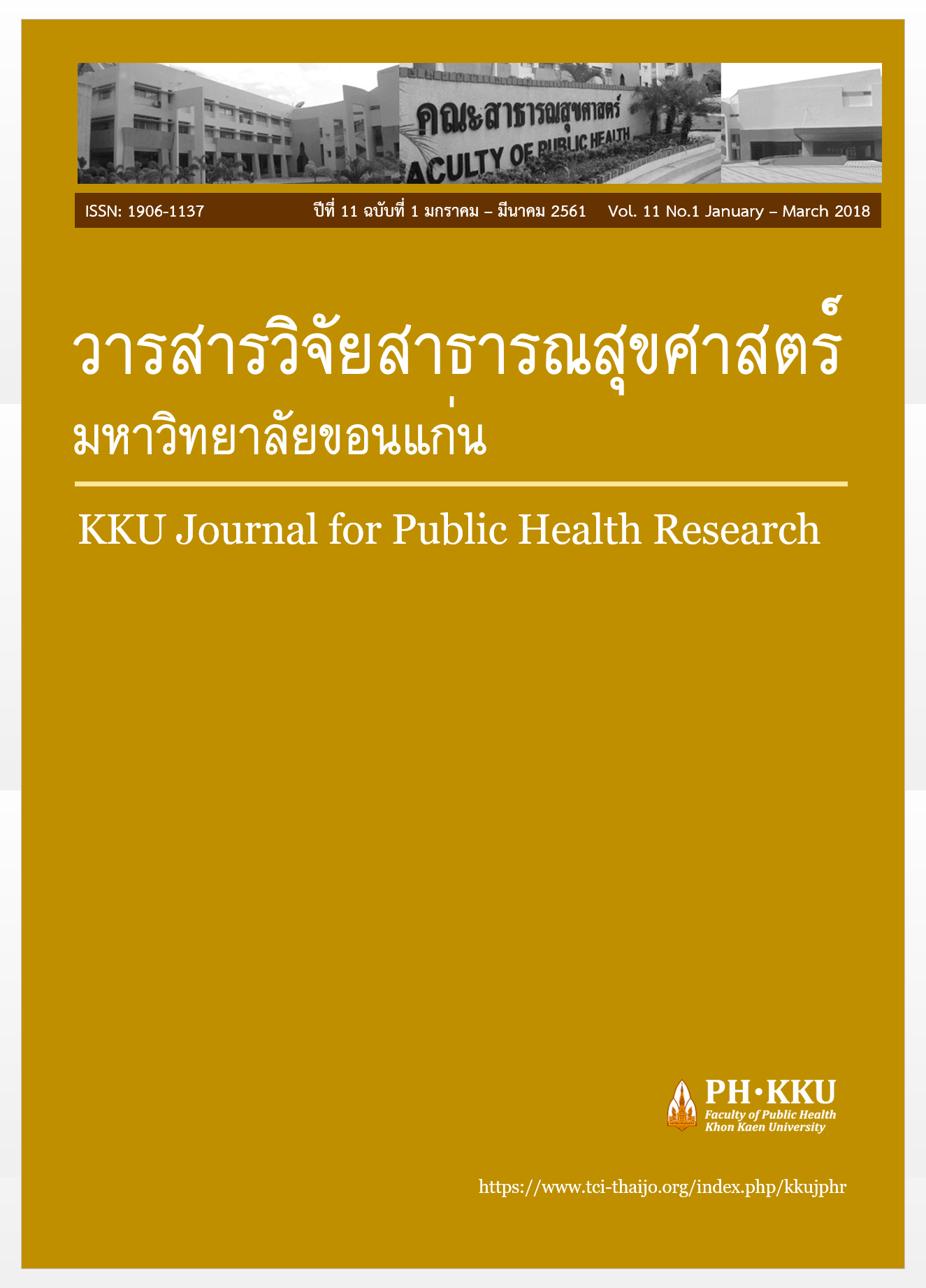Predictors of HIV Preventive Behaviors Amongst Migrants Living in the Transportation Crossroads of Myawaddy Township, Myanmar
คำสำคัญ:
HIV Preventive Behaviors, Migrants, Myawaddy, Myanmarบทคัดย่อ
Migration and infrastructure development fuel transmission of HIV infection among migrants and behavioral changes increase their vulnerability to HIV/AIDS. This study aimed to assess proportion of HIV preventive behaviors and factors influencing on HIV preventive behaviors among migrants in Myawaddy Township, Thailand-Myanmar border area. A community based cross-sectional study was conducted among 358 migrants aged between 18 to 49 years which were recruited by two-stage cluster sampling. Data collection was carried out by trained interviewers using structured
questionnaires during the first and second week of April, 2017. Chi square test and multiple logistic regression were performed to examine factors associated with HIV preventive behaviors among migrants. Age, marital status, levels of knowledge and receiving appropriate information about available services were found as associated factors between inbound and outbound type of migrants. The study revealed that 17.3% of 358 migrants have no sexual experience, 98.4% have only one sex partner, 3.4% have history of condom use at last sex during last 12 months and 19.6% have history of HIV testing last 12 months. Based on criteria of practicing at least 2 in 3 activities of having no sex, having one sex partner and using condom at last sex during last 12 months, 17.9% of the participants have HIV preventive behaviors. The multivariate analysis showed that married migrants staying together with spouse was significantly associated with preventive sexual behaviors (Adj. OR= 3.82, 95% CI=1.63-8.92). Moreover, migrants who had participated in health education sessions were more likely to engage with HIV testing practice in last 12 months (Adj. OR=6.35, 95% CI=3.12-12.92) and HIV preventive behaviors (Adj. OR=6.95, 95% CI=3.34-14.45) than those who had not. Additionally, migrants who were free from influence of alcohol or narcotic drugs before having sex were predictor of HIV preventive behaviors (Adj. OR=2.49, 95% CI= 1.04-5.95). Therefore, all the study findings suggest that HIV among Myanmar’s migrants prevention should be forwarded by a policy and strategy focusing on promoting health education and raising awareness about HIV and AIDS among migrants based on community based activities.



